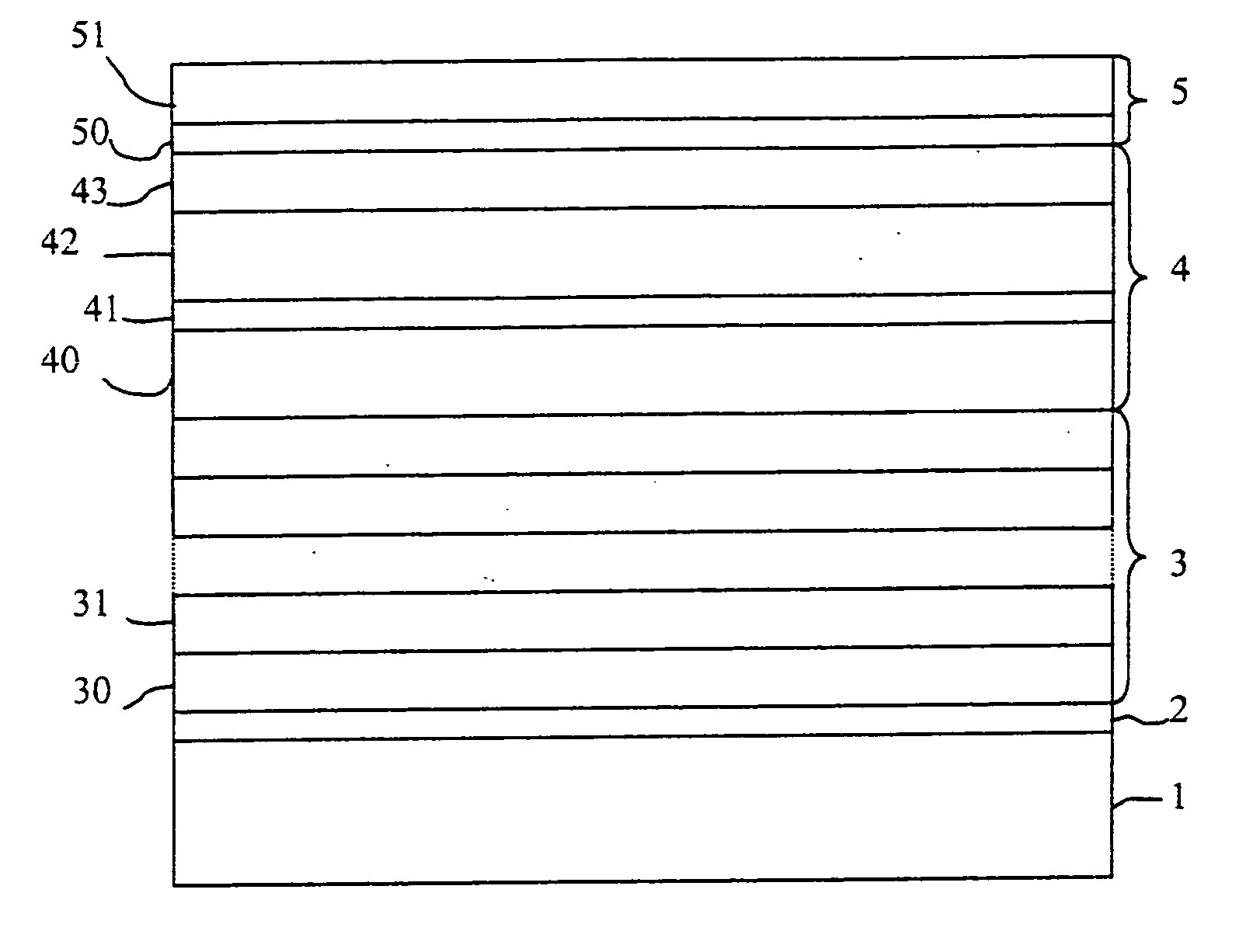Protective coating system for reflective optical elements, reflective optical element and method for the production thereof
a technology of reflective optical elements and protective coatings, applied in the field of protective coatings, can solve the problems of increasing operational costs, affecting the appearance of defects, and contamination by carbon-containing substances, and achieves the effects of improving the appearance quality, improving the service life, and improving the service li
- Summary
- Abstract
- Description
- Claims
- Application Information
AI Technical Summary
Benefits of technology
Problems solved by technology
Method used
Image
Examples
example 1
[0037] A multilayer of 50 periods of Mo (2.74 nm) / Si (4.11 nm) on an amorphous SiO2-substrate was provided with a protective coating system. This protective coating system comprises an upper protective coating system made of an aluminum oxide layer of a thickness of 1.29 nm and a lower coating system made of Rh2O3 (1.3 nm) / Y (1.5 nm) / amorphous C (1.35 nm) / Ce (1.11 nm). The rhodium oxide layer is the inert material layer, which assumes the function of an absorber. The yttrium layer, together with the cerium layer, corresponds to a spacer layer. The total thickness of yttrium and cerium is optimized for maximum reflectivity. The amorphous carbon layer serves as diffusion barrier. The yttrium layer and the cerium layer are also inert. At an angle of incidence of 0 degree to the surface normal and an operating wavelength of 13.4 nm under neglect of the surface- and interface roughness a maximum reflectivity of 70.3% (refer to FIG. 2) is obtained. Even after operation under residual gas ...
example 2
[0038] It concerns a multilayer of 50 periods of Mo (2.74 nm) / amorphous Si (4.11 nm) which is deposited on an amorphous SiO2-substrate. This multilayer shows an upper coating system of an Y2O3 (0.84 nm)-layer as carbon-growth poor material as well as a lower coating system of Y (3.36 nm) / Y2O3 (0.84 nm) / Y (3.36 nm) / Y2O3 (0.84 nm) / Y (3.36 nm). The Y2O3-layers suppress the growth of carbon-containing substances; the Y-layers are inert. The yttrium layers assume optically the function of a spacer, while the yttrium oxide layers assume the function of an absorber. At an angle of incidence of 0 degree to the surface normal and an operating wavelength of 13.4 nm under neglect of the surface- and interface roughness a reflectivity of 69.8% (refer to FIG. 3) is obtained. After irradiation for 65 hours under normal operating conditions the multilayer still shows a reflectivity of 97.0% of the initial reflectivity.
example 3
[0039] On a multilayer of 50 periods of Mo (2.74 nm) / amorphous Si (3.66 nm), which is deposited on an amorphous SiO2-substrate, is located a protective coating system consisting of an upper coating system of the one layer of Y2O3 (1.93 nm) as well as a lower coating system of the one layer of Y (3.58 nm), whereby the yttrium oxide layer shows a low adsorption rate for carbon-containing substances and is also inert. The yttrium layer has optically the function of a spacer, while the yttrium oxide layer assumes the function of an absorber. At an angle of incidence of 0 degree to the surface normal and an operating wavelength of 13.4 nm under neglect of the surface- and interface roughness a reflectivity of 73.3% (refer to FIG. 4) is obtained. After irradiation under normal operating conditions for 40 hours the multilayer still shows a reflectivity of 98.5% of the initial reflectivity.
PUM
| Property | Measurement | Unit |
|---|---|---|
| Fraction | aaaaa | aaaaa |
| Thickness | aaaaa | aaaaa |
| Thickness | aaaaa | aaaaa |
Abstract
Description
Claims
Application Information
 Login to View More
Login to View More - R&D
- Intellectual Property
- Life Sciences
- Materials
- Tech Scout
- Unparalleled Data Quality
- Higher Quality Content
- 60% Fewer Hallucinations
Browse by: Latest US Patents, China's latest patents, Technical Efficacy Thesaurus, Application Domain, Technology Topic, Popular Technical Reports.
© 2025 PatSnap. All rights reserved.Legal|Privacy policy|Modern Slavery Act Transparency Statement|Sitemap|About US| Contact US: help@patsnap.com



